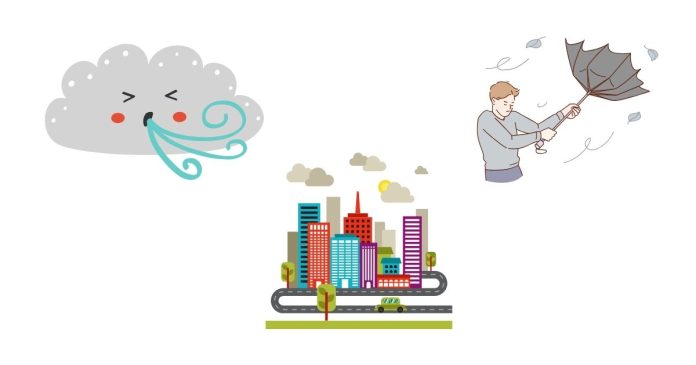When we think of windy cities, Chicago often comes to mind thanks to its famous nickname, “The Windy City.” However, many cities around the world experience far stronger and more persistent winds. From coastal locations battered by ocean breezes to high-altitude cities buffeted by atmospheric currents, let’s explore some of the windiest cities globally.
1. Wellington, New Zealand
Wellington proudly wears the title of one of the world’s windiest cities. Known as the “Windy Wellington,” it is situated between New Zealand’s North and South Islands, where the Cook Strait channels strong winds. Average wind speeds often exceed 18 miles per hour (29 km/h), with gusts reaching even higher velocities. The city’s geography and proximity to the roaring forties, a band of strong westerly winds, make it particularly vulnerable to gusty conditions.
2. Barrow Island, Australia
While Barrow Island might not be a bustling metropolis, it holds the record for the highest wind gust ever recorded on Earth: 253 miles per hour (408 km/h) during Tropical Cyclone Olivia in 1996. Although uninhabited cities might not compare in terms of population, this remote island in Western Australia is a reminder of nature’s extreme power.
3. Dodge City, Kansas, USA
Dodge City is located in the heart of America’s Tornado Alley, where strong winds are a regular occurrence. With an average wind speed of 13 miles per hour (21 km/h), the city experiences frequent gusts and storms due to its flat terrain and central location in the United States.
4. Punta Arenas, Chile
Punta Arenas, a city at the southern tip of Chile in Patagonia, is notorious for its fierce winds. Winds in this area can reach speeds of 25 miles per hour (40 km/h) on average, with gusts exceeding 55 miles per hour (88 km/h). Residents often hang onto handrails and ropes in particularly windy conditions to maintain balance while walking.
5. St. John’s, Canada
As the easternmost city in North America, St. John’s in Newfoundland experiences constant winds due to its exposure to the North Atlantic. Average wind speeds of 13 miles per hour (21 km/h) are common, with winter storms bringing even stronger gusts. Its coastal location and frequent cyclonic activity contribute to its reputation as one of Canada’s windiest spots.
6. Edinburgh, Scotland
Scotland’s capital, Edinburgh, experiences regular windy weather, earning it the nickname “Auld Reekie” for the mist and smoke that often mix with its breezes. Wind speeds average 13 miles per hour (21 km/h) due to the city’s position between the coast and the surrounding hills.
7. Perth, Australia
Known for its consistent afternoon sea breezes, locally called the “Fremantle Doctor,” Perth experiences regular winds that can reach up to 20 miles per hour (32 km/h). These breezes provide welcome relief from the city’s hot temperatures but also contribute to its ranking among the world’s windiest cities.
8. Reykjavik, Iceland
Iceland’s capital, Reykjavik, is no stranger to strong winds. Located in the North Atlantic, the city experiences average wind speeds of 12 miles per hour (19 km/h), with powerful storms frequently sweeping across the island. The combination of its high latitude and exposure to the open ocean makes Reykjavik a perpetually breezy place.
Why Are These Cities So Windy?
The windiest cities often share common geographical traits:
- Coastal Proximity: Many windy cities are near large bodies of water, where land and sea temperature differences generate strong breezes.
- Mountain Channels: Cities near mountain ranges often experience winds funneled through valleys and narrow straits.
- Open Plains: Flat landscapes, such as those in Kansas, allow winds to move unimpeded.
- Weather Patterns: Regions frequently affected by cyclones, hurricanes, or strong atmospheric currents are naturally windier.
Living in a Windy City
While strong winds can pose challenges, such as higher energy consumption and infrastructure strain, they also offer advantages. Many windy cities harness wind power for renewable energy, making them leaders in sustainability.
So, the next time you feel the breeze, take a moment to appreciate the forces of nature at work. Whether you’re strolling through the gusty streets of Wellington or bracing against the chill in Reykjavik, the wind shapes these cities in unique and fascinating ways.


